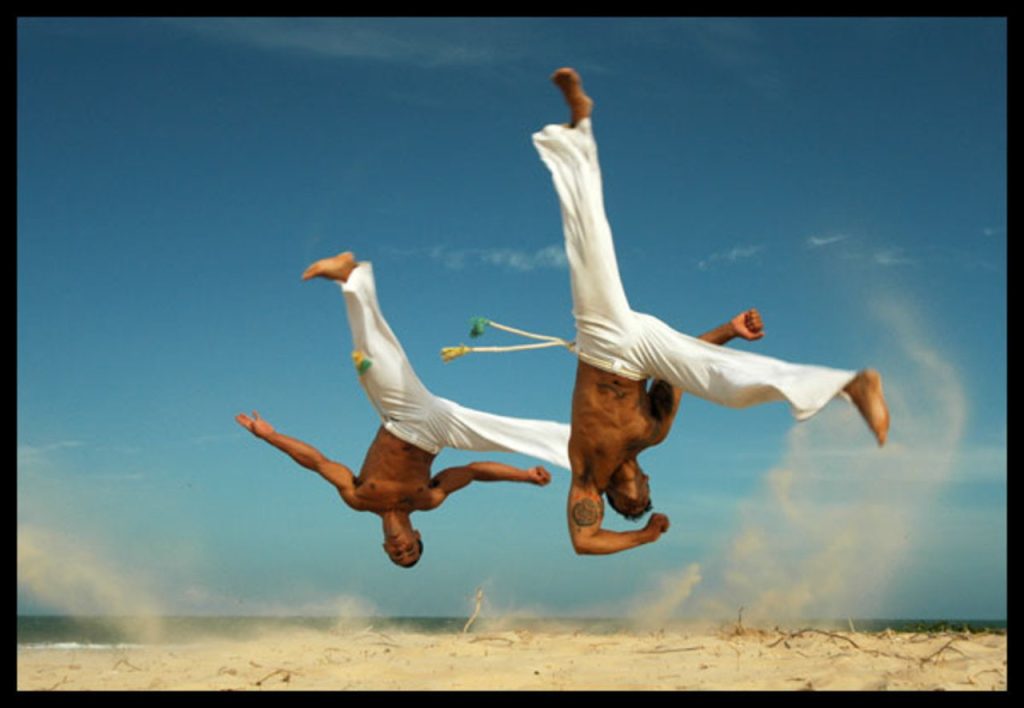
Capoeira is more than just a martial art; it’s a dance, a game, and a form of expression deeply rooted in Brazilian culture. This article delves into the history, techniques, and significance of this unique art form.
The Historical Roots of Capoeira
Capoeira’s origins trace back to the African slaves brought to Brazil. Over time, it evolved as a means of resistance and expression.
The African slaves in Brazil, during the 16th century, were subjected to harsh conditions and brutal treatment. In their quest for freedom and self-expression, they developed Capoeira, a blend of dance and martial art. Initially, it was a tool for survival, allowing slaves to defend themselves while disguising their moves as dance. The art form was clandestine, practiced in secret to avoid detection by slave masters.
As Brazil moved towards the abolition of slavery in the late 19th century, Capoeira became associated with criminal elements. This led to its prohibition in the early 20th century. However, the ban was lifted in the 1930s, and Capoeira began its journey towards mainstream acceptance.
In essence, Capoeira’s history is a testament to the resilience and creativity of the African slaves in Brazil. It stands as a symbol of resistance, survival, and cultural preservation.
Capoeira Instruments and Rhythms
Capoeira it’s a cultural experience that combines elements of dance, music, and acrobatics. Central to this experience is the music, which sets the pace and mood of the game. The instruments used in Capoeira are unique and play a significant role in the roda (circle in which Capoeira is played).
Main Instruments of Capoeira
| Instrument | Description | Role in the Roda |
|---|---|---|
| Berimbau | A single-string percussion instrument, which is the primary instrument in Capoeira | Sets the rhythm and controls the game’s pace |
| Atabaque | A tall, wooden, conical drum | Provides the base rhythm |
| Pandeiro | A type of hand frame drum | Adds a rhythmic layer |
| Agogô | A bell with two cones made of iron or tin | Marks the rhythm with its distinct high-pitched sound |
| Reco-reco | A scraped percussion instrument | Creates a rasping rhythmic sound |
The rhythms played on these instruments dictate the style and speed of the Capoeira game. For instance, a slow rhythm might indicate a more traditional, ritualistic game, while a faster rhythm could signify a more playful or competitive game.
Each instrument has a unique role, and together they create the vibrant musical backdrop against which the martial art is practiced.
Techniques and Styles: The Dance of Combat
Capoeira is characterized by its fluid movements, acrobatics, and rhythmic patterns. Let’s explore the core techniques that define this art form.
At the heart of Capoeira lies the “roda” – a circle formed by participants where two players engage in a game. The movements are not just about combat but also about strategy and playfulness. Key techniques include:
- Ginga: The fundamental movement in Capoeira, it’s a side-to-side motion that sets the rhythm.
- Esquivas: Defensive moves that involve dodging an opponent’s attack.
- Ataques: The various kicks and strikes used to engage the opponent.
- Acrobatics: Flips, cartwheels, and handstands that add flair to the game.
There are also different styles of Capoeira, each with its own set of techniques and philosophies. The two primary styles are “Capoeira Angola” and “Capoeira Regional”. While Angola retains a traditional approach with slower movements, Regional is more contemporary with faster-paced action.
The beauty of Capoeira lies in its fluidity and rhythm. It’s a dance where every move has a purpose, be it defense, attack, or pure expression.
Cultural Significance: Beyond the Martial Art
Capoeira is not just a form of combat; it’s deeply intertwined with Brazilian culture and identity.
Music plays a pivotal role in Capoeira. Instruments like the berimbau, atabaque, and pandeiro set the rhythm for the game. Songs, often in Portuguese, narrate stories, give advice, or simply set the mood. These elements make Capoeira a communal experience, bringing people together in celebration and competition.
Furthermore, Capoeira has transcended its Brazilian roots to become a global phenomenon. Schools and academies worldwide teach the art form, spreading its message of unity, resilience, and cultural pride.
As a result, Capoeira is more than just kicks and flips. It’s a celebration of history, culture, and community. Capoeira stands as a testament to the human spirit’s ability to find expression even in the harshest conditions. From its origins among African slaves to its global recognition today, it remains a symbol of freedom, resilience, and cultural pride. Whether you see it as a dance, a game, or a martial art, Capoeira is, at its core, a celebration of life and human connection.